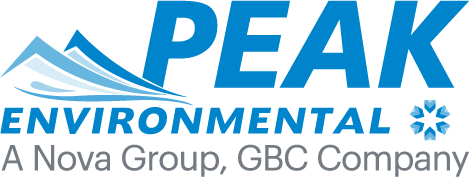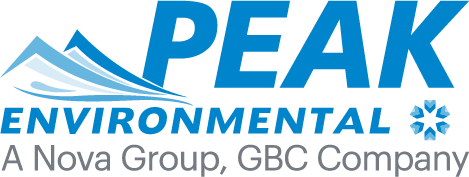Environmental Remediation
Environmental Remediation
Environmental remediation must result in conditions that are protective of human health, safety, and the environment. The number of applicable remediation options for a given project can be twenty or more, depending on contaminant type media affected, and property use and can range from basic removal to long term, high complexity remediation systems. Therefore, a structured approach to alternative selection is required to support effective decision-making based on information available at the time.
When active remediation is necessary, Peak’s Remedial Alternative Selection (RAS) process provides a comprehensive approach to evaluating alternatives and selecting the best remedial option for a given Site. Evaluated options include multiple variations of physical removal and disposal or treatment, in-situ treatment systems, abiotic destruction & in-situ chemical oxidation (ISCO) injections, aerobic and anaerobic bioremediation amendment injections, and containment technologies, each potentially applicable to soil, groundwater, surface water, sediment, vapor or combinations thereof.
The process considers the effectiveness for contaminants present, client goals, regulatory mandates and restrictions, future use of property, duration and schedule, cost, logistics, accessibility, disruption to operations, and post-remedial requirements. A typical site is evaluated in two steps. Initially, a wide set of remedial alternatives applicable to the type of contaminant and the affected media are screened. Subsequently, potentially applicable alternatives are compared based on a series of detailed evaluation metrics to further reduce the list of best alternatives and rank them.
Costs & Financials Estimate life cycle cost, funding, capital costs, expenses, cash flow
Remedial Objective Success Verify demonstrated effectiveness of alternative
Constructability Confirm logistics and site use, infrastructure proximity
Safety Minimize HSSE risks to team and third parties
Integrity Maximize long-lerm effectiveness/reliability
Related Projects
Peak Promotes Charles Podesta to Project Manager
Charles has been promoted to Project Manager! Charles joined Peak as entry-level Staff Scientist in 2016 and gained experience in conducting multi-media environmental sampling, completing regulatory tasks, and supporting remediation projects including the installation...
Peak Promotes Steven Spreitzer to Project Manager
Steven has been promoted to Project Manager! Steven joined Peak in 2021 as a Project Scientist. Steven graduated from the State University of New York with a major in Geology. He also obtained an MS in Earth and Climate Sciences from the University of Maine. Steven...
Peak Promotes Kristen Castronuovo to Project Scientist
Kristen has been promoted to Project Scientist! Kristen graduated from Rider University in 2020 with a degree in Environmental Science and has been a valuable member of Nova’s Peak Environmental Division since 2021. Kristen has gained experience in Due Diligence...
Discuss Your Project
Service Areas
Site Remediation
Licensed Site Remediation Professionals
Regulatory Compliance
Phase I / Due Diligence
Contact
Peak Environmental, A Nova Group, GBC Company
732-326-1010
info@peak-environmental.com
26 Kennedy Blvd, Suite A
East Brunswick, NJ 08816
Industries
Legal
Real Estate
Financial
Insurance
Petroleum
Manufacturing
Materials
Construction
Education


